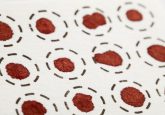Microsampling: where are we now? by Tim Sangster (Charles River Laboratories, UK)

 Tim Sangster is a well travelled bioanalytical chemist, having worked in Scotland, Italy, England, America and finally back to Scotland to head up the Bioanalysis and Immunology Department for Charles River, Edinburgh, 6 years ago. During his travels he has gained experience in both CROs and Pharma supporting drug development from a bioanalytical perspective from discovery through to market. Currently Tim’s main scientific focus is in the use of microsampling to reduce and refine toxicology study designs as well as applying it to other application areas, and also the use of LC–MS in the analysis of macromolecules.
Tim Sangster is a well travelled bioanalytical chemist, having worked in Scotland, Italy, England, America and finally back to Scotland to head up the Bioanalysis and Immunology Department for Charles River, Edinburgh, 6 years ago. During his travels he has gained experience in both CROs and Pharma supporting drug development from a bioanalytical perspective from discovery through to market. Currently Tim’s main scientific focus is in the use of microsampling to reduce and refine toxicology study designs as well as applying it to other application areas, and also the use of LC–MS in the analysis of macromolecules.
Microsampling has been an interest of mine since the 1990s and to reflect where we are in the field today I would like to review how we got here by taking a personal look at microsampling over the last couple of decades.
I began working in this industry in 1995 and instrumentation and chromatographic advances rapidly changed over my first couple of years as a bioanalytical chemist. The first instrument I had the pleasure of using was an API300, which rapidly advanced to API365 and then API3000. While the mass spectrometers increased in sensitivity through the generations, we also improved, or more correctly, changed the chromatography to give enhanced sensitivity. The increase in sensitivity in the early years was used to reduce the complexity of the sample preparation performed. A lot of the methodology being developed moved away from the selective techniques that were commonly used, such as liquid–liquid extraction or solid-phase extraction, to use protein precipitation.
So while sensitivity increased in our assays, the volume of plasma or blood being collected from the animals was not reduced. I looked at the available techniques in the late 1990s and the only thing that appeared to be commercially available and appropriate to separate low volumes of blood to plasma was the microvettes from Sarstedt (Numbrecht, Germany). I had some success separating 150 µl of blood to create plasma in the laboratory, but, when I tried to get support to utilize the reduced volumes to change our toxicology study designs, I was unable to find support to move this forward.
In the early years of the millennium, microsampling was not a major focus for me and there was not a lot of visible activity in the industry. We routinely reduced samples to generate our bioanalytical data and the impetus to change sampling on either toxicological or clinical studies was relatively minimal. The advantage of the sensitivity was used to really drive down the amount of sample being extracted and to reduce the impact of matrix on analysis. The bioanalytical community became highly aware of the impact of matrix effects when using electrospray ionization, and one of the easiest ways to deal with this was to reduce the amount of matrix included in the final extract. So, we utilized the enhanced sensitivity we had gained to reduce the limit of quantification in our assays, while also using significantly less matrix.
During the 1990s there were some real advances in microsampling. The team at GSK (UK) had started to use dried blood spots (DBS) for samples in both preclinical and clinical studies. While we are acutely aware of the problems that have since come to light related to DBS, I firmly believe that the microsampling cause was significantly accelerated by the work that GSK undertook.
At a similar period of time, the team at AstraZeneca (Södertälje, Sweden) was also investigating microsampling and they came up with an approach that was initially targeted at blood microsampling, but adapted to generate extremely small volumes of plasma. The teams I worked in then were very keen on both of these new techniques. Since then we have done significant amounts of research and studies with both approaches supporting preclinical development.
So where are we today?
Microsampling in early development (discovery) has become very much the accepted approach. Many people have been using blood microsampling or a variety of techniques involving capillaries, other separation techniques and also solid sample matrices. The other separation techniques involve the current version of the microvettes I tested back in the 1990s. The acceptance into regulated workflows has been relatively slow with few of the big pharmaceutical companies really coming to the fore. GSK have worked closely with Drummond Scientific (PA, USA) to develop a novel capillary device and AstraZeneca have worked on their capillary microsampling technique; both have applied these successfully to their regulated toxicology studies.
The industry is starting to see many more companies begin to embed microsampling into their preclinical workflows. In the past couple of years, we have seen some real commitment to microsampling by several large companies and also from our regulators. In January 2016, the International Conference for Harmonization released a Q&A document on microsampling, which importantly discusses the idea of taking safety data measurements from main study animals and generating the toxicokinetic and exposure data in the same animals. There has also been a lot of discussion within the industry ensuring that we generate our safety and toxicokinetic data in the same animals. Microsampling has not only facilitated these discussions but is also enabling our ability to deliver this. The removal of toxicokinetic subgroups from studies is having and will continue to have a significant impact on reducing the number of animals used in research.
Microsampling is now part of many companies’ workflows within the research and laboratory space and is becoming part of our day-to-day language in bioanalysis and clinical development. Microsampling outside of the laboratory is a key development, although here I am not meaning clinical support and the potential benefits of home sampling. Over the last few years at Charles River (Edinburgh, UK) we have been involved with investigating the use of microsampling to develop new opportunities in environmental research. Charles River has used DBS to support studies in quail, partridge and, most recently, the common vole.
With the increased interest in and advantages of microsampling, which have led to a lot of development and investment in new technology, I would like to bring into focus the newest developments to your attention as a look into the future of microsampling.
Volumetric absorptive microsampling (VAMS) is a unique approach to a solid matrix, which overcomes some of the concerns and issues that have been identified with DBS. The potential of VAMS is very high, particularly in clinical research.
The clinical use of microsampling was really driven during the development of DBS, but has really lost traction over the past couple of years. However, there is some excellent work in the pediatric space and Hitesh Pandya (University of Leicester, UK) has really shown the advantages of DBS and is now working on the new VAMS device.
Microsampling tomorrow
I believe we are in a strong position as an industry where research companies, regulators and suppliers are all actively discussing the future, but also engaged in maximizing the potential of the current technology to the betterment of research programmes. I know the work of the European Bioanalytical Forum (EBF) and their current research work into microsampling, through an industry consortium, will be most significant to the continued acceptance and application of microsampling.
Currently, microsampling is quietly vibrant and the future is looking bright. As an industry we have moved into an exciting time in bioanalytical research as we utilize the gains in sensitivity, from our wide variety of analytical platforms, to change the way we conduct our in vivo research, supported by some really innovative developments in sample collection and handling.
I urge anyone who wants to know more about the current state of microsampling or to find out more about any of the techniques I have mentioned above to visit the NC3R’s microsampling website – https://www.nc3rs.org.uk/microsampling.
This editorial article was featured in an interactive supplement on microsampling published on Bioanalysis Zone. Click here to read the complete supplement.
Our expert opinion collection provides you with in-depth articles written by authors from across the field of bioanalysis. Our expert opinions are perfect for those wanting a comprehensive, written review of a topic or looking for perspective pieces from our regular contributors.
See an article that catches your eye? Read any of our articles below for free.






